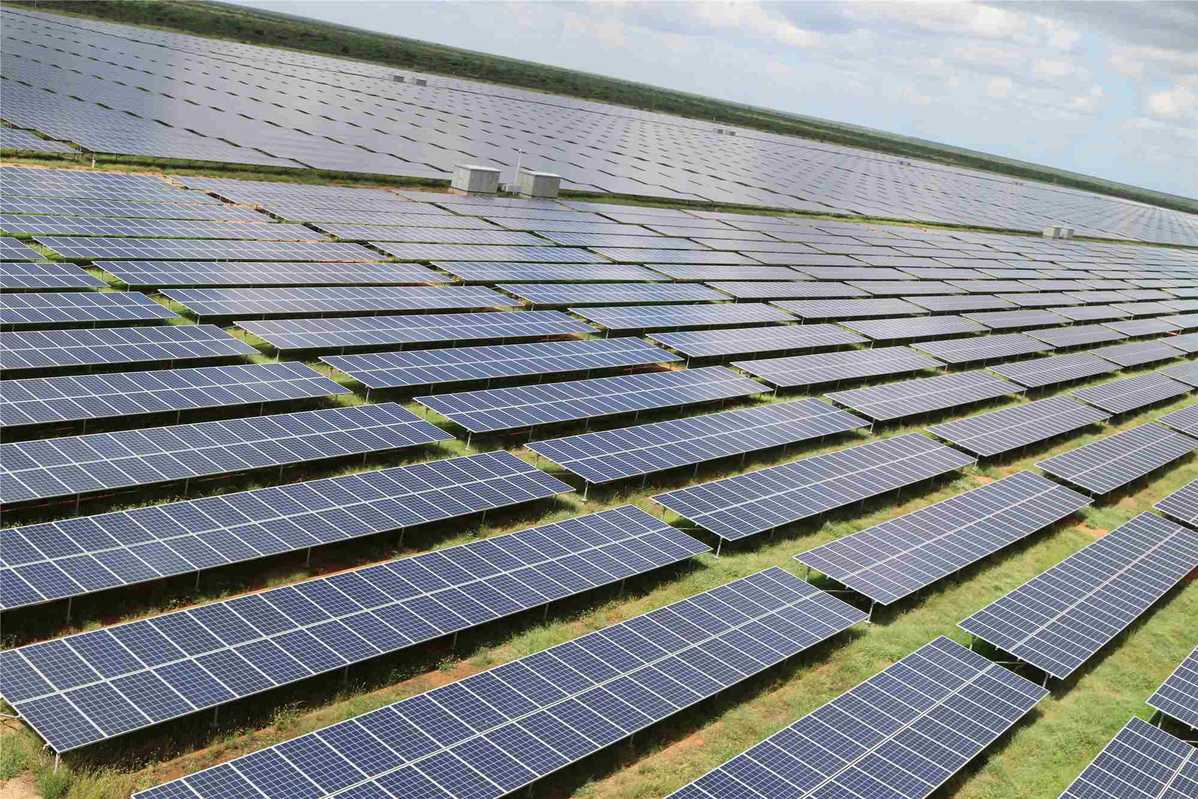By Gerald Mbanda
China’s journey toward green energy has not only transformed its domestic economy but is also reshaping its global partnerships — particularly with Africa. Over the past decade, China has emerged as a key partner in helping African countries transition toward cleaner, more sustainable sources of energy. Through investments, technology transfer, and infrastructure development, China’s collaboration with African nations is accelerating the continent’s green transformation while aligning with global climate goals.
One of the major platforms driving China–Africa green energy collaboration is the Belt and Road Initiative (BRI). In recent years, the initiative has increasingly emphasized “green development” as a core principle. China has pledged to stop building new coal power projects overseas and instead support renewable energy ventures. In Africa, this policy shift is evident in the growing number of solar, wind, and hydroelectric projects funded or constructed by Chinese companies.
For example, the Garissa Solar Power Plant in Kenya, developed by the China Jiangxi Corporation for International Economic and Technical Cooperation, is one of East Africa’s largest solar farms. It provides clean electricity to more than 70,000 households, significantly reducing Kenya’s dependence on fossil fuels. Similarly, in Egypt, Chinese firms have played a crucial role in constructing the Benban Solar Park, one of the world’s largest solar power installations, which contributes over 1.6 gigawatts of renewable energy to the national grid.
China’s approach goes beyond financing infrastructure; it includes technology transfer and skills development, essential components for Africa’s long-term energy independence. Chinese firms often work alongside local engineers and technicians, offering training in project management, equipment maintenance, and renewable technology operation. In Ethiopia, for instance, Chinese companies have provided technical assistance for hydro and wind energy projects such as the Adama Wind Farm, which supplies power to thousands of households. These initiatives not only expand access to electricity but also cultivate local expertise, ensuring that African nations can manage and maintain green infrastructure independently in the future.
Access to funding remains one of the biggest challenges for renewable energy development in Africa. China has stepped in to bridge this gap through soft loans, public-private partnerships, and direct investment. Financial institutions such as the China Exim Bank and the China Development Bank have financed numerous renewable projects, often under favorable terms. Moreover, Chinese private enterprises are increasingly investing in Africa’s clean energy sector. Companies like Huawei and Sungrow Power Supply Co. are providing smart solar solutions, grid technologies, and battery storage systems to improve energy efficiency and reliability. These investments complement African countries’ efforts to meet the United Nations Sustainable Development Goal 7 (Affordable and Clean Energy) and reduce carbon emissions.
While China’s involvement has sparked optimism, it also invites careful consideration of environmental and social impacts. Both sides are increasingly aware that large-scale energy projects must adhere to sustainability standards. Recent cooperation frameworks emphasize green financing, environmental assessments, and local community benefits to ensure that renewable projects promote inclusive development. African governments, supported by Chinese partners, are crafting policies that balance energy security with environmental protection. For instance, South Africa’s collaboration with Chinese firms on battery storage and smart grid technologies helps integrate renewables without compromising grid stability — a vital step for sustainable industrialization.
China’s green energy partnership with Africa is transforming the continent’s energy landscape. It is helping to replace fossil fuel dependency with renewable alternatives, building infrastructure that supports economic growth, and empowering local communities with new skills and technologies. As climate change continues to pose global challenges, the China–Africa green energy collaboration stands as a model for South–South cooperation — one built on shared interests, mutual benefit, and a common vision for a cleaner, more sustainable world. The next decade will be crucial, but if current trends continue, Africa’s green future will be powered not just by the sun and the wind, but by a partnership rooted in innovation and sustainability.
Gerald Mbanda is a Researcher and publisher on China and Africa Cooperation




Just tried phdreamvip1, and it’s actually pretty cool. The interface is smooth, and I won a little bit. Worth checking out if you’re looking for something different phdreamvip1.
Die Nutzer können die Ereignisse live verfolgen und ihre Wetten in Echtzeit platzieren. Ja,
Bet365 bietet Live-Wetten zu einer Vielzahl von Sportarten und Ereignissen an. Normalerweise kann der Bonus zusätzliches Geld für Sportwetten oder Gratiswetten auf Bet356-Slots beinhalten. Der Bonus
variiert je nach Land, in dem Sie Ihren Wohnsitz haben, besteht aber in der Regel aus Gratis-Wettguthaben oder einem Bargeldbonus, der bei
Ihrer ersten Einzahlung ausgelöst wird.
Sie können also sicher sein den aktuellen Code für bet365 zu erhalten. Der Bonus von bet365 wird in Form von Wettcredits für Gratiswetten gewährt.
Dadurch findest du dich im Bet365 sofort zurecht und navigierst spielend leicht zu
deinen Lieblingsspielen. In diesem erhältst du eingesetztes Geld zurück,
um öfter mit deinem Guthaben spielen zu können. Dadurch kannst du tolle Titel wie Starburst,
Motörhead oder Holmes And The Stolen Stones spielen.
Im folgenden geben wir Ihnen unserer persönliche Bewertung von bet365 in die unserer eigenen Erfahrungen eingeflossen sind.
Die 5% Gebühr auf gewonnene Wetten entfällt, somit sind Wetten bei
bet365 steuerfrei. Viele Wettanbieter legen die
von Ihnen zu entrichtende Wettsteuer auf Ihre Kunden um.
In einigen Ländern müssen Sportwetten Anbieter eine Steuer entrichten.
References:
https://online-spielhallen.de/alles-uber-den-sugar-casino-bonus-code-und-mehr/
In der fürs US-amerikanische Fernsehen bearbeiteten Version von 1954
wurde sie in Valerie Mathis umbenannt und auch der tragische Aspekt ihres unfreiwilligen Doppelagentendaseins
blieb unbeachtet, sodass sie und der zu einem CIA-Agenten umgeschriebene Jimmy Bond einander in einem
typisch amerikanischen “Zelluloid-Happy-End“ in die Arme sinken können. Er drehte mit einem separaten Team einige
Kampfszenen und Aufnahmen von Craig, um ihn in seinem ersten Film angemessen vorzustellen.
Parallel zu den Autoszenen mit Cornell sieht man Bond
in seinem Aston Martin DBS die Entführer
Vesper Lynds verfolgen und die Kontrolle über den Wagen verlieren.
November 2006 Weltpremiere in London und startete neun Tage
später in den deutschen Kinos.
References:
https://online-spielhallen.de/umfassender-ratgeber-zur-ice-casino-mobile-app/
Die Software vergibt oft in dem Spiel Starburst Free Spins, wodurch
dieser Slot auch bei vielen Casinospielern bekannt und populär
ist. Der erste Deposit ist mit 50 Freispielen am
Narcos Automat verbunden. Wer sich für den skandinavischen Onlineanbieter entscheidet,
erhält zum Einstieg 30 Casino Freispiele ohne Einzahlung.
Es gibt aber auch Online Casinos, die durchweg Freispiele
für alle angebotenen Online Spielautomaten ermöglichen. Die User müssen also mindestens einen Deposit
vollziehen und diesen Betrag einmal komplett durchspielen,
ehe eine Abhebung der Freispiel-Gewinne möglich ist.
Gibt es auch andere Spielangebote, auf die du Wert legst und werden diese abgedeckt?
Und wenn wir über einenBook of Dead Bonus ohne
Einzahlungsprechen, dann sind damit in der RegelFreispiele für Book of
Deadgemeint, die du speziell für diesen Slot bekommst.
Bereits jetzt kooperiert der Spielehersteller mit vielen Casinos, die eine der deutschen Glücksspiellizenzen erhalten haben. Schauen wir noch,
welche besonderen Angebote du im Hinblick auf
einen Casino Online Rewards Bonus ohne Einzahlung 2025 erhalten kannst.
Freispiele, die du 2025 in einem Online Casino mit Bonus ohne Einzahlung erhältst, sind meistens nur für Stunden gültig.
Wie kurz angesprochen, erwarten dich bei den Umsatzbedingungen eines
Casino Willkommensbonus ohne Einzahlung auch oft Einschränkungen hinsichtlich der Spielauswahl.
Sie können dann in Sekundenschnelle Geld einzahlen, spielen und
gewinnen. Gleiches gilt auch für Boni, mit denen Sie im
Casino online spielen können. Krypto-Casinos gewinnen zunehmend an Beliebtheit, und viele von ihnen bieten exklusive No
Deposit Bonus für Spieler, die mit Kryptowährungen spielen.
References:
https://online-spielhallen.de/greatwin-casino-cashback-ihr-weg-zu-besseren-gewinnen/
Außerdem werden euch jedes Wochenende Einzahlungsboni und
Freispiele angeboten. BonusFree Spins Angebot100%
bis 500 €100 Umsatz30x Summe aus Einzahlung & Bonus40x umsetzen Zeitlimit10
Tage bis Verfall10 Tage zum Freispielen Min. Für Gewinne aus Freispielen gilt, dass diese
mindestens 40 Mal an Slots gesetzt werden müssen. Wenn
ihr im 7Signs Casino spielen möchtet, ist es zuerst notwendig, eine Registrierung vorzunehmen.
Wenn Sie gerne auf Ihrem Smartphone oder Tablet
spielen, brauchen Sie auf 7Signs nicht zu verzichten. Gewinne aus Freispielen müssen 40-mal umgesetzt werden.Sie haben zehn Tage lang
Zeit, um alle Bonusbedingungen zu erfüllen. Nomini ist die Schwesterspielbank
von 7Signs und bietet praktisch die gleichen sieben Willkommensboni und ein ähnliches Spielerlebnis an.
Doch was 7Signs Casino wirklich auszeichnet, ist das unerschütterliche Engagement für
schnelle Auszahlungen, bei denen Gelder in der Regel innerhalb eines Werktages transferiert
werden. Unterstützung auf Expertenniveau ist 24/7 über den Live-Chat oder E-Mail verfügbar,
während das VIP-Programm gestaffelte Belohnungen und personalisierte Vorteile für treue Spieler bietet.
References:
https://online-spielhallen.de/plinko-casino-freispiele-ihr-weg-zum-gewinnregen/